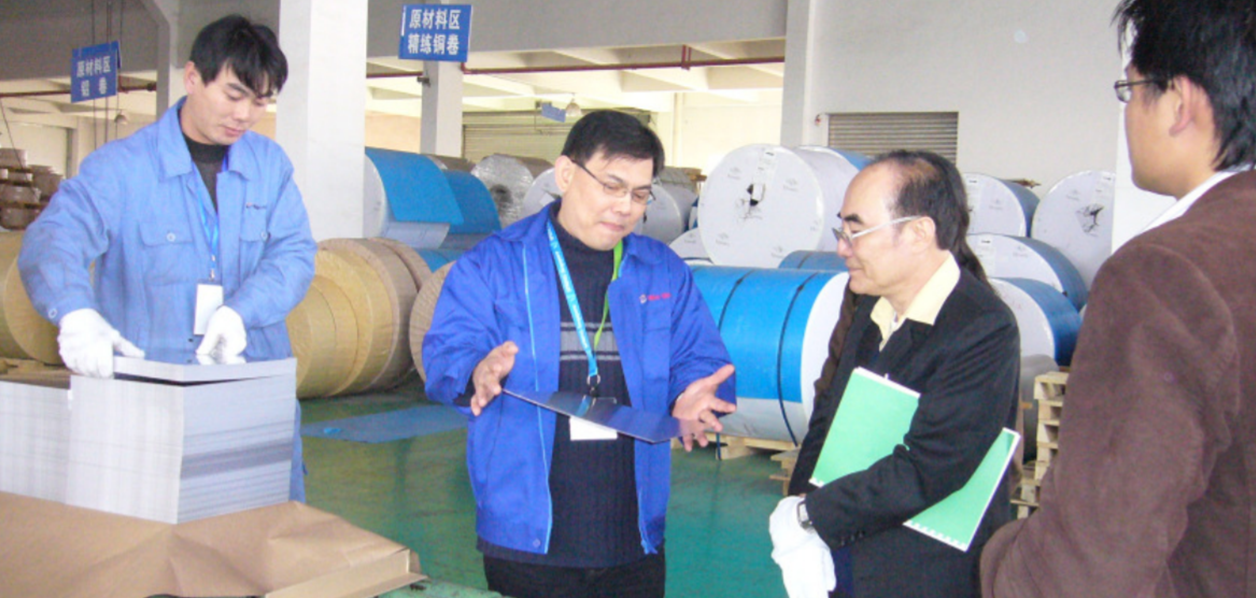Melding materials for 5G technology
With a wealth of experience working with the best, Nico Steel encourages out-of-the-box thinking and innovative ideas to stay ahead of trends.
Elegant rose gold jewellery, essential smartphones, a strong cast-iron pan and a television loaded with the latest streaming services, these items have one component in common—alloys. Expected to become an US$11 billion industry by 2027, alloys are a combination of different metals, or metals with non-metals. They embody the best properties of all its different source materials, and are the preferred material for many commonly-used devices and metallic items.
Led by a team of three brothers, Nico Steel specialises in creating customised metal alloys designed to fit each customer’s requirements. With an eye on the future, Nico Steel is also focusing its research and development efforts on developing cutting-edge alloys for 5G technology and digital transformation.
As 5G devices tend to be more mobile and multifunctional, they typically require material components with specific properties that can support their usability. Existing standard metallic materials are already stretched when it comes to strength-to-weight ratio, heat dissipation and electromagnetic protection. With 5G on its way to 1.9 billion subscribers worldwide by 2024, Nico Steel has stepped up innovation efforts and begun developing lightweight thermal materials to meet future 5G requirements and then some.
Nico Steel Executive Director and Head of Marketing and Product Innovation Steven Tang shares the benefits of open innovation and how the company has harnessed creative thinking to keep ahead of the competition.
1. What is the core competency of Nico Steel in both Singapore and overseas markets?
Our core competency is material solutions technology. We provide material solutions to resolve customers’ design problems and achieve their product design objectives.
2. Was there a turning point in Nico Steel’s history that convinced you that open innovation was the right way to go?
In 2002, we realised that for Nico Steel to continue to grow in the metal industry, we had to be innovative. We realised we couldn’t just focus on volume sales, we had to provide full material solutions. We changed our name to Nico Steel Solutions and stand behind our slogan: Think Innovation!
3. How has open innovation benefitted Nico Steel thus far?
We started investing in research and development for material development and process development. So far, we have achieved over 30 patents and 10 new material alloys under our proprietary Nico’s brand material. Our Nico’s brand material has been selected by many big brands as the official material solution for their devices’ designs.
In 2017, we worked closely with Da-Jiang Innovations (DJI), currently the largest drone company in the world, to enhance their ultra-light long-distance drone. To achieve the desired distance and connectivity, DJI needed to build a lightweight drone under 200 grams. It also had to be highly sensitive and be able to connect to a wireless control device during flight.
Our proposed solution CNT-AL50 was a hybrid of various technologies to meet the design requirements. CNT-AL50 was used to build the drone’s on-board shielding can, providing the best electromagnetic shielding possible while still keeping the drone below 200 grams.
CNT-AL50 is a combination of two Nico Steel technologies—a continuous tin pre-plate called CNT and a super high strength and lightweight aluminium alloy called AL50. To date, we are still DJI’s only source for their shielding can solutions.
4. How do you encourage a culture of open innovation in Nico Steel? What practical steps help you explore new technologies in the semiconductor industry or ways to enhance product performance?
Our culture is centred on one word: DRIVE.
D: Daring creativity
R: Regarding change as an opportunity
I: Intense passion
V: Visionary customer and supplier partnership
E: Excellence
With DRIVE in mind, our staff will be able to look out for problems that our material solutions can solve. If we cannot solve the problem with our existing solutions, it will “DRIVE” us to investigate and examine new technologies to overcome these problems.
For example, Lenovo had a major heat issue for one of their high-end notebook computers. Their thermal and mechanical engineers worked very hard to find a way to remove the heat from the CPU chipset fast enough during operation but due to limited space, they could not include more thermal transfer solutions.
We investigated and noticed that the keyboard had a large enough surface area to help spread the CPU heat. To make use of that, we needed to use a material with the highest possible thermal conductivity, while maintaining the mechanical strength of a traditional stainless steel keyboard. A material like that is not currently available in the market, so we invested into material reformulation and developed our new copper alloy brand—CuN700. CuN700 has the high thermal conductivity of pure copper but the strength of stainless steel. After undergoing trials and testing, CuN700 was approved as the new high thermal keyboard material for Lenovo.
5. What are some lessons that you have learnt in the process of engaging in open innovation both internally and with partners?
We need to change the mindset of our staff, suppliers and other process partners—to be innovative, we need everyone to think out of the box. It has become exceedingly difficult to identify the right staff and partners that share this common vision and mindset. We have set up mind mapping training for key personnel and are pushing out innovative programmes for our operation processes.
6. How has IPI enhanced Nico Steel’s open innovation journey?
IPI provides many new solutions and inventions from various sources which helps us to update our technology. By having first-hand information regarding technology trends, our development team will be able to focus on new technology or processes to match future industry needs.

